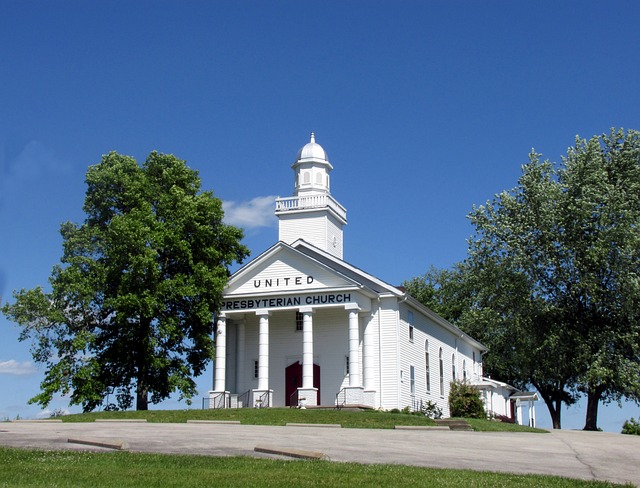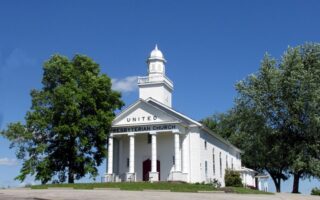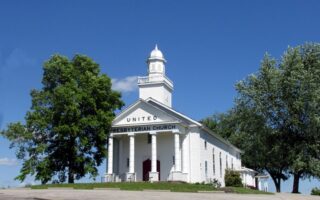Presbyterians have varying beliefs and practices regarding dancing, as it is not explicitly addressed in their core doctrines. Some Presbyterian denominations may discourage or prohibit certain forms of dancing, while others may embrace it as a form of expression and celebration. Ultimately, the stance on dancing within Presbyterianism can differ among individual churches and their respective interpretations of scripture and tradition.
Table of Contents
The Historical Perspective on Presbyterian Views on Dancing
Are Presbyterians allowed to dance? This is a question that has been debated among members of the Presbyterian Church for many years. To understand the current views on dancing within the Presbyterian Church, it is important to take a look at the historical perspective.
In the early years of the Presbyterian Church, dancing was generally frowned upon. Many church leaders believed that dancing was a sinful activity that could lead to immoral behavior. They saw it as a form of entertainment that often involved excessive drinking and inappropriate behavior. As a result, dancing was discouraged and even prohibited in some Presbyterian communities.
However, over time, the views on dancing within the Presbyterian Church began to shift. As society changed and became more accepting of dancing as a form of expression and entertainment, some Presbyterians started to question the strict stance on dancing. They argued that dancing could be a wholesome activity that brought joy and community to people’s lives.
In response to these changing attitudes, the Presbyterian Church began to reevaluate its stance on dancing. In 1946, the General Assembly of the Presbyterian Church in the United States issued a statement on dancing. The statement acknowledged that dancing could be a legitimate form of recreation and expression, but it also emphasized the importance of maintaining moral standards and avoiding situations that could lead to sin.
Since then, the Presbyterian Church has taken a more nuanced approach to dancing. While there is no official prohibition on dancing, individual congregations and pastors have the freedom to set their own guidelines and restrictions. Some Presbyterian churches may still discourage or prohibit dancing, while others may embrace it as a form of celebration and worship.
It is important to note that the Presbyterian Church’s views on dancing are not set in stone. They continue to evolve and adapt to the changing cultural landscape. As society becomes more accepting of different forms of expression, it is likely that the Presbyterian Church will continue to reassess its stance on dancing.
In conclusion, the historical perspective on Presbyterian views on dancing reveals a shift from strict prohibition to a more nuanced approach. While dancing was once seen as a sinful activity, the Presbyterian Church now recognizes that it can be a legitimate form of recreation and expression. However, individual congregations and pastors have the freedom to set their own guidelines and restrictions. As the cultural landscape continues to change, it is likely that the Presbyterian Church will continue to reassess its stance on dancing. So, are Presbyterians allowed to dance? The answer is not a simple yes or no, but rather a reflection of the diverse beliefs and practices within the Presbyterian Church.
Understanding the Theological Arguments for and against Dancing in Presbyterianism

Are Presbyterians allowed to dance? It’s a question that has sparked debate and discussion within the Presbyterian community for years. While some may argue that dancing is a harmless form of expression and celebration, others believe that it goes against the principles and teachings of the Presbyterian faith. In this article, we will explore the theological arguments for and against dancing in Presbyterianism.
One of the main arguments against dancing in Presbyterianism is rooted in the belief that it can lead to sinful behavior. Some argue that dancing can be a gateway to immorality, as it often takes place in environments that promote drinking, promiscuity, and other sinful activities. They believe that by participating in dancing, individuals are putting themselves in situations that can lead them away from God’s teachings.
On the other hand, there are those who argue that dancing can be a form of worship and celebration. They believe that when done in a respectful and modest manner, dancing can be a way to express joy and gratitude to God. They point to biblical examples such as King David, who danced before the Lord with all his might, as evidence that dancing can be a legitimate form of worship.
Another argument against dancing in Presbyterianism is based on the belief that it can distract from the true purpose of worship. Some argue that dancing can shift the focus away from God and onto the individual or the performance itself. They believe that worship should be centered solely on God and that any form of self-expression or entertainment should be avoided.
However, proponents of dancing in Presbyterianism argue that it can actually enhance worship by engaging the whole person – body, mind, and spirit. They believe that dancing can be a way to physically express one’s devotion and love for God. By involving the body in worship, they argue that individuals can experience a deeper connection with God and a greater sense of unity with the community.
Ultimately, the question of whether Presbyterians are allowed to dance is a matter of personal interpretation and conviction. While some may choose to abstain from dancing based on their understanding of the theological arguments against it, others may feel comfortable incorporating it into their worship and celebration.
It is important to note that the Presbyterian Church as a whole does not have an official stance on dancing. Each individual congregation and its leadership may have their own guidelines and beliefs regarding dancing. Some may choose to prohibit it altogether, while others may allow it within certain parameters.
In conclusion, the question of whether Presbyterians are allowed to dance is a complex one. The theological arguments for and against dancing in Presbyterianism highlight the tension between personal expression and adherence to religious principles. Ultimately, it is up to each individual Presbyterian to prayerfully consider their own convictions and seek guidance from their faith community. Whether one chooses to dance or not, the most important thing is to worship God with a sincere and humble heart.
Examining the Cultural Influences on Presbyterian Attitudes towards Dance
Are Presbyterians allowed to dance? It’s a question that has been asked by many, and the answer may surprise you. To understand the Presbyterian stance on dance, we need to examine the cultural influences that have shaped their attitudes towards this form of expression.
Presbyterians, like many other Christian denominations, have historically been influenced by a puritanical worldview that frowned upon activities deemed as worldly or sinful. This strict moral code often included a prohibition on dancing, as it was seen as a frivolous and potentially immoral activity. Dancing was associated with temptation, lust, and a lack of self-control.
However, it is important to note that attitudes towards dance have evolved over time within the Presbyterian community. As society has become more accepting of different forms of artistic expression, so too have many Presbyterians. Today, there is a wide range of opinions within the Presbyterian Church regarding dance.
Some Presbyterians still adhere to the traditional view that dancing is inherently sinful. They believe that it can lead to immoral behavior and should be avoided at all costs. These individuals often cite biblical passages that warn against the dangers of worldly pleasures and the importance of maintaining a pure and holy lifestyle.
On the other hand, there are many Presbyterians who embrace dance as a legitimate form of artistic expression. They argue that dance can be a beautiful and meaningful way to worship God and celebrate life. These individuals often point to biblical examples of dance being used in religious ceremonies and celebrations, such as the dancing of King David before the Ark of the Covenant.
In addition to biblical arguments, cultural influences have also played a significant role in shaping Presbyterian attitudes towards dance. In some cultures, dance is an integral part of social gatherings and celebrations. As Presbyterianism has spread to different parts of the world, these cultural practices have been incorporated into local expressions of faith.
For example, in some African Presbyterian churches, dance is a central component of worship services. It is seen as a way to connect with God and express joy and gratitude. Similarly, in Presbyterian churches in Latin America, dance is often used as a form of evangelism, with church members performing traditional dances to attract new converts.
In conclusion, the question of whether Presbyterians are allowed to dance is not a simple one. While there are still some who adhere to a strict interpretation of biblical teachings and view dance as sinful, many Presbyterians have embraced dance as a legitimate form of artistic expression and worship. Cultural influences have also played a significant role in shaping Presbyterian attitudes towards dance, with different practices and traditions being incorporated into local expressions of faith. Ultimately, the decision to dance or not to dance is a personal one, guided by individual beliefs and convictions.
Exploring Modern Interpretations and Practices of Dance within the Presbyterian Church
Are Presbyterians allowed to dance? It’s a question that has been debated within the Presbyterian Church for years. While some may argue that dancing is a sinful activity, others believe that it can be a form of worship and expression. In this article, we will explore the modern interpretations and practices of dance within the Presbyterian Church.
To understand the Presbyterian Church’s stance on dancing, it is important to look at its historical context. In the past, dancing was often associated with immorality and worldly pleasures. Many religious denominations, including the Presbyterian Church, viewed it as a sinful activity that should be avoided. However, as times have changed, so have the interpretations of dance within the church.
Today, many Presbyterians believe that dancing can be a way to celebrate and worship God. They argue that dance can be a form of artistic expression and a way to connect with the divine. In fact, some Presbyterian churches have even incorporated dance into their worship services, using it as a way to enhance the spiritual experience of their congregants.
However, it is important to note that not all Presbyterians agree with this modern interpretation of dance. Some still hold onto the belief that dancing is inherently sinful and should be avoided. They argue that it can lead to temptation and immorality, and therefore, should not be practiced by Christians.
Despite these differing opinions, many Presbyterian churches have taken a more inclusive approach to dance. They recognize that it can be a positive and meaningful way to express oneself and connect with others. These churches often offer dance classes and workshops, allowing their members to explore this art form in a safe and supportive environment.
In addition to worship and artistic expression, dance is also seen as a way to build community within the Presbyterian Church. Many churches organize social events that include dancing, such as dances for youth groups or church-wide dances. These events provide an opportunity for members to come together, have fun, and strengthen their relationships with one another.
While the Presbyterian Church as a whole does not have a definitive stance on dancing, it is clear that there is a growing acceptance and appreciation for this art form within the denomination. Many Presbyterians now view dance as a way to celebrate and honor God, as well as a way to connect with others and build community.
So, are Presbyterians allowed to dance? The answer is not a simple yes or no. It ultimately depends on the individual’s personal beliefs and the practices of their specific church. However, it is clear that dance is becoming more accepted and embraced within the Presbyterian Church, with many seeing it as a way to worship, express oneself, and build community.
In conclusion, the question of whether Presbyterians are allowed to dance is a complex one. While some still hold onto the belief that dancing is sinful, many Presbyterians now view it as a way to worship and express themselves. Dance has become a means of building community and strengthening relationships within the church. As times change and interpretations evolve, it is likely that the Presbyterian Church will continue to explore and embrace the role of dance within its practices.
Conclusion
Yes, Presbyterians are generally allowed to dance.


